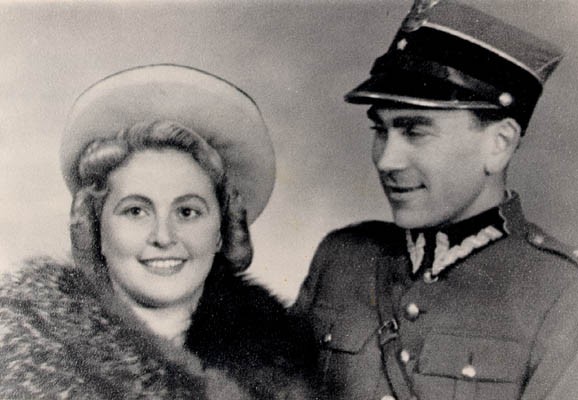
Norman Salsitz
Despite great obstacles, Jews throughout occupied Europe attempted armed resistance against the Germans and their Axis partners. They faced overwhelming odds and desperate scenarios, including lack of weapons and training, operating in hostile zones, parting from family members, and facing an ever-present Nazi terror. Yet thousands resisted by joining or forming partisan units. Among them was Norman Salsitz.
Norman Salsitz was born May 6, 1920, in a small town in southern Poland. Though he has gone by seven different names in his lifetime, Norman Salsitz has always been the same person: tough, resourceful, and honest. The youngest of nine siblings, Norman was among the Jewish inhabitants forced into a ghetto in June of 1941 by the Germans. Looking for strong labor, the Germans selected Norman and other healthy young Jews to dismantle recently decimated ghettos. While Norman worked to destroy any remaining signs of his heritage and religion, the Germans began sending his friends and family to the death camps.
Norman knew that with each ghetto they demolished, the workers drew closer to their own murders.
In October of 1942, Norman organized an escape group of 55 people and fled to the surrounding forest. He had some money he had found during his ghetto work, and he used it to buy his first revolver. The sympathetic Pole who sold him the weapon also led Norman to a group of resistance fighters in the woods. These fighters fought through harsh weather conditions on rough terrain to dismantle and damage German railroads, mills, and police stations.
In 1944, Norman joined the AK Polish underground, despite the strong presence of antisemitism. He knew that as a Jew, he would never be able to make the contribution to defeat the Nazis he wanted to without disguising his Jewish idenitity and joining the powerful AK. Norman worked with the underground to defeat their common foes until the command was given to seek out and kill Jews being hidden on a farm. Norman volunteered for the mission, killing the Poles who had been sent with him and rescuing the Jews in hiding. He then fled the AK and returned to his original partisan unit where he remained until he was liberated by the Russians.
Norman Salsitz’s mother’s dying wish was for her son to keep their stories alive. He has honored that wish by writing books and speaking about his war experiences. From the horrors of mass murder to the inspiration of weary fighters singing hymns, Norman continues to fight for the truth.
In his own words:
“This is why I keep going, we have to tell the world what the German murderers did to us.”
Norman Salsitz died on October 11, 2006.
Critical Thinking Questions
- What obstacles and limitations did Jews face when considering resistance?
- What pressures and motivations may have influenced Norman Salsitz's decisions and actions? Are these factors unique to this history or universal?
- How can societies, communities, and individuals reinforce and strengthen the willingness to stand up for others?

